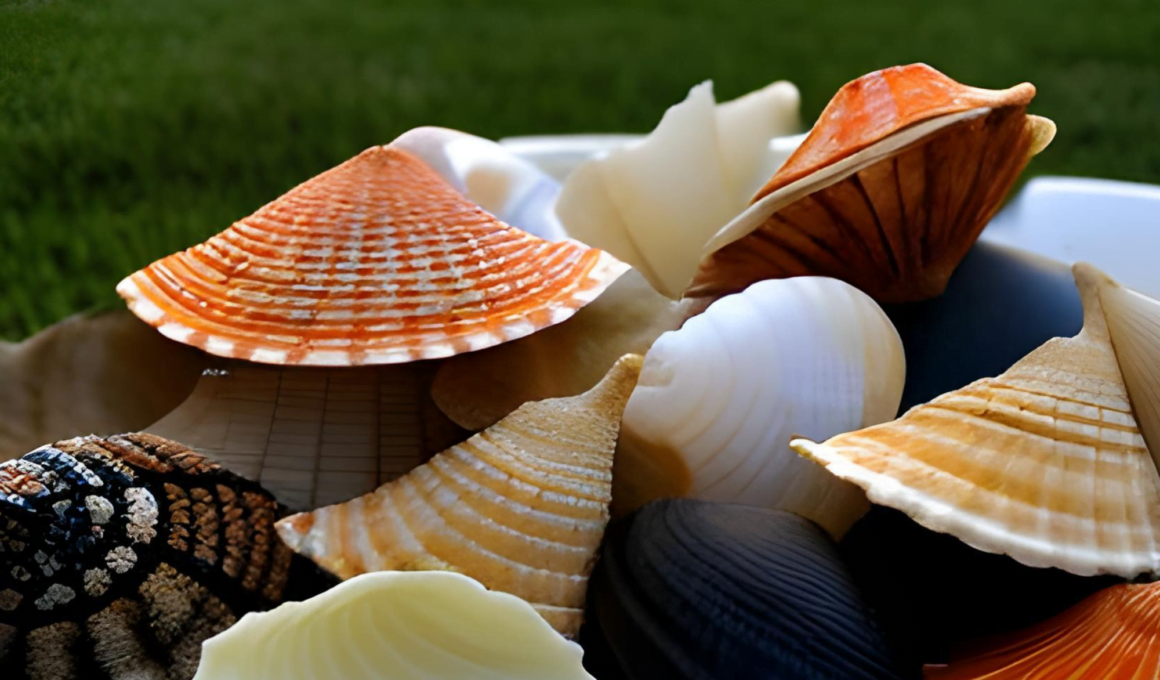Key Takeaways
- Seashells may end up in your yard due to animal activity, wind transportation, human influence, natural phenomena, or weather incidents like flooding and hurricanes.
- Seashells can be beneficial for gardening as they improve soil texture and pH, provide nutritional value for plants, and can be used decoratively in gardens.
- Potential issues with seashells in your yard include impacting the overall aesthetics of your outdoor space and attracting pests like snails. Methods for removing seashells from your yard include raking, handpicking, using a power blower or hose off technique, or manually extracting larger shells.
Reasons for Finding Seashells in Your Yard
 Seashells can end up in your yard for a variety of reasons, including animal activity and wind transportation.
Seashells can end up in your yard for a variety of reasons, including animal activity and wind transportation.
Animal activity
Animals, especially birds, are known to carry and deposit seashells into yards. Birds drop these shells while in flight either accidently or after they’ve eaten the mollusk within the shell. Likewise, terrestrial creatures such as raccoons may transport sea shells from their original locations during foraging expeditions along coastal lines. One notable case is garden snails leaving behind empty casings as they move about your yard which often explains tiny snail shells scattered around your garden. Also grass snails’ presence has been proven to be a common source of seashells appearance in some lawns. Therefore it’s not unusual that even if you live miles away from any beach or oceanfront, you might still discover surprising amounts of seashell deposits in your backyard due to animal activity.Wind transportation
Seashells in your yard may be the result of wind transportation. Strong winds at coastal areas can carry seashells over long distances, eventually depositing them in your backyard or garden. This is especially common if you live near a beach or coastline. The power of the wind allows it to pick up and transport lightweight objects like seashells, which can then settle in different locations. So, don’t be surprised if you find these beautiful treasures scattered across your lawn after a particularly windy day.Human influence
Human influence is another possible reason why you may find seashells in your yard. People often collect seashells during visits to the beach or while on vacation, and these shells can sometimes end up being dropped or accidentally transported back home. Additionally, some individuals use seashells for decorative purposes in their gardens, placing them strategically throughout the yard. Over time, these shells may become dislodged or scattered around due to human activity. So if you’re finding seashells in your yard, it’s possible that they were brought there by people either intentionally or unintentionally.Natural phenomena
Natural phenomena, such as erosion and changes in climate, can explain why seashells may migrate into your yard. Erosion along coastlines can cause shells to be washed up onto the shore and eventually make their way into nearby yards. Additionally, weather occurrences like flooding or hurricanes can lead to seashells being carried inland and deposited in unexpected places. These natural processes contribute to the appearance of seashells in your yard, adding a touch of coastal charm to your surroundings.Weather incidents
Seashells may appear in your yard as a result of weather incidents like flooding and hurricanes. During these extreme weather events, coastal areas are often affected by strong winds and high tides, which can carry seashells inland. As water levels rise and recede during floods or storms, they can transport shells from the seashore to your yard. This phenomenon explains why you might find seashells deposited on your lawn or scattered throughout your garden after such weather occurrences.Can Seashells in the Yard Affect the Repair Process After Removing an Above Ground Pool?
Removing an above ground pool leaves homeowners wondering about the impact on their yard. Can seashells scattered in the yard affect the repairing process? While seashells may add a charming touch, they can hinder repairs. Uneven surfaces can result from shells shifting, making it harder to level the ground. Clearing seashells is crucial for an effective repairing yard after above ground pool removal.
Can Seashells be Used for Gardening?
 Seashells can be beneficial for gardening because they improve soil texture and pH, provide nutritional value for plants, and can be used decoratively in gardens.
Seashells can be beneficial for gardening because they improve soil texture and pH, provide nutritional value for plants, and can be used decoratively in gardens.
Benefits for soil texture and pH
Seashells can actually be beneficial for improving the texture and pH of your garden soil. When seashells break down, they release calcium carbonate into the soil, which helps to neutralize acidic soil and raise its pH level. This is especially beneficial for plants that prefer slightly alkaline conditions. Additionally, the presence of seashells in the soil can help to loosen compacted earth and improve drainage, allowing water to penetrate more easily. As a result, your plants’ roots will have better access to nutrients and oxygen, leading to healthier growth. So don’t overlook those seashells in your yard – they could be a natural way to enhance your garden’s soil!Nutritional value for plants
Seashells may seem like an unlikely source of nutrition for plants, but they actually offer some benefits to your garden. When seashells decompose in the soil, they release minerals such as calcium and magnesium, which are essential nutrients for plant growth. Calcium helps strengthen cell walls in plants and promotes root development, while magnesium is necessary for chlorophyll production and overall plant health. Additionally, seashells can help increase the pH level of acidic soil, making it more alkaline and favorable for a wider range of plants to thrive. So next time you spot seashells in your yard, consider their potential nutritional value for your beloved plants.Decorative purposes in gardens
Seashells can serve as beautiful decorative elements in gardens, adding a unique and coastal touch to the overall aesthetic. They can be strategically placed along garden paths, around flower beds, or even arranged in creative patterns to create eye-catching focal points. Not only do they add visual interest, but they also evoke a sense of tranquility and remind us of the ocean’s beauty. With their diverse shapes, sizes, and colors, seashells can be used creatively to enhance any garden design while bringing a touch of nature’s artistry into your outdoor space.Potential Issues and Solutions with Seashells in Your Yard
– Seashells in your yard can impact the overall aesthetics of your outdoor space. – Controlling pests, such as snails, that may be attracted to the shells should be considered. – If you want to remove seashells from your yard, there are various methods you can try.Impact on yard aesthetics
The presence of seashells in your yard can have both positive and negative impacts on its aesthetics. On one hand, the addition of seashells can create a unique and beach-like atmosphere, giving your yard a charming coastal vibe. This can be particularly appealing if you live near the ocean or enjoy creating a maritime-themed garden. However, it is important to note that an excessive amount of seashells scattered across your yard may give it a cluttered and disorganized appearance. Additionally, if not properly maintained, seashells can become dirty and unsightly over time. Therefore, it is crucial to strike a balance when incorporating seashells into your landscaping design to prevent them from overwhelming the overall aesthetic appeal of your yard.Pest control considerations
Pest control is an important factor to consider when finding seashells in your yard. While seashells can enhance the beauty of your garden, they can also attract pests such as snails and slugs. These creatures can cause damage to your lawn and plants, leading to a less pleasant outdoor space for you to enjoy. To prevent these pests from taking over, it is essential to take proactive measures. Regularly inspect your yard for any signs of infestation, such as slimy trails or holes in leaves. Consider using natural deterrents like crushed eggshells or coffee grounds around vulnerable plants to deter snails and slugs.Methods for removing seashells from the yard
If you’re finding seashells in your yard and would like to remove them, here are some methods you can try:- Rake: Use a garden rake to gather up the seashells. Start from one corner of your yard and work your way across, collecting the shells as you go.
- Handpicking: If there are only a few seashells scattered around your yard, you can simply pick them up by hand. This method is more time-consuming but effective for smaller areas.
- Power blower: If the seashells are loosely scattered across your yard, using a power blower can help blow them away. Be careful not to blow any soil or other debris with it.
- Hose off: If the seashells are embedded in the soil or grass, try using a hose to spray water directly on them. This will loosen their grip on the ground, making it easier to remove them afterward.
- Manual extraction: For larger shells that are more difficult to remove, use a shovel or trowel to dig around them and carefully lift them out of the ground.









